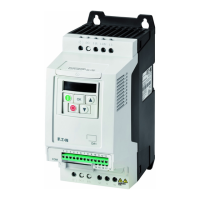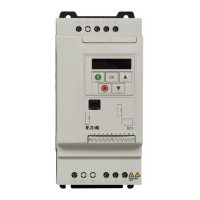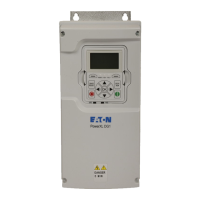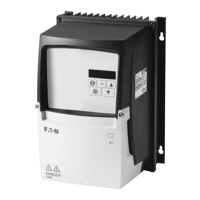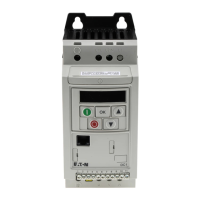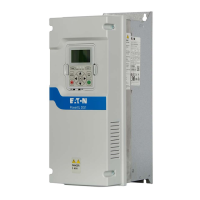126
Hardware specifi cation
POWERXL SERIES VFD MN040010EN—June 2018 www.eaton.com
Table 151. DeviceNet parameters
Code Parameter Min. Max. Unit Default
ID
(Slot A/Slot B) Note
BX.1.1 Board status 0 883/910 B0 = DCOM Comm. Fault
B1 = Board HW fault
B2 = Reserved
B3 = Fieldbus fault
B4 = DNET 24 V fault
BX.1.2 Protocol status 0 2136/2147 0 = Non existent bus power
1 = Configuring state
2 = Established
3 = Timeout
BX.2.1 MAC ID 0 63 63 2137/2148 Address of device.
BX.2.2 Baud rate 0 2 0 2138/2149 0 = 125 kBaud
1 = 250 kbaud
2 = 500 kBaud
BX.2.3 IO Poll type 0 7 0 2187/2188 0 = Assembly 21/71
1 = Assembly 20/70
2 = Assembly 21/71
3 = Assembly 23/73
4 = Assembly 25/75
5 = Assembly 101/107
6 = Assembly 111/117
7 = Assembly 111/127
BX.2.4 Comm Card FB
Fault Response
0 1 0 2519/2520 0 = In Fieldbus Control
1 = in all Control
DeviceNet Overview
DeviceNet is designed to provide two different types
ofmessaging: I/O Messaging and Explicit Messaging.
I/O Messaging
I/O polling messages are set up for time-critical data that
is oriented for control sequences. These messages are
transferred between the devices and the master at all
times and used for continuous control of the devices.
It is a dedicated communication path between the
producing application or master device and the one or
more consuming devices or slaves. These messages are
not in the 8-byte data protocol. Before messages are
sent, the master and slave need to be configured. In the
configuration, it contains the source and destination object
attribute addresses for the master and slave.

